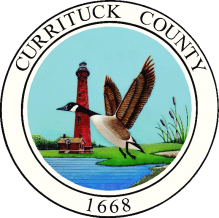Backflow is the unwanted reversal of liquid or water. Back siphonage and backpressure are the two main reasons for backflow. Back siphonage can occur in the event the water system loses pressure such as a water main break. Backpressure occurs when water on the customers side has more pressure than the water system.
A cross connection is a direct or indirect connection between the water supply and a source of pollution or contamination. One of the most common cross connections is caused by a garden hose for example. A garden hose submerged in a bucket of soapy water or a pool. A chemical sprayer attachment that fits on the end of a hose. This is also an example of an indirect cross connection because it is only temporary. A direct cross connection is a perinate link to the water supply such as a boiler or geothermal HVAC system, irrigation system or fire sprinkler systems.
Backflow History
One of the first documented cases of backflow was during the 1933 Chicago world fair. To this day it’s still one of the deadliest backflow incidents in history. On August 16, 1933, and the days to follow nearly 100 people died and over 700 fell ill due to a cross connection between a potable and non-potable water source.
Out of the tragedy came innovation and the creation of the Foundation for Cross Connection Control and Hydraulic Research (FCCCHR). This was an anonymous group of individuals that believed unbiased standard for backflow prevention was needed to protect the water supply throughout the United States.
In 1944 money was donated to the University of Southern California by a member of the Foundation for Cross Connection Control and Hydraulic Research. This money was to build a laboratory and hire staff members to help began drafting definitions and specifications covering cross-connection control and the assemblies required for the prevention of backflow.
In 1974 Congress passes the Safe Water Drinking Act under this act the Environmental Protection Agency (EPA) sets standards for drinking water quality. Each state regulates those standards set forth by the EPA. These standards include cross connection control and elimination programs that must enforce by the water purveyor.
Backflow Incidents
On the morning of March 4, 2020, the Italian town of Castelvetro di Modena was able to recreate a miracle thanks to a backflow incident at a locate vineyard. Due to a valve malfunction wine was sent into the local water supply and into nearby residents’ homes. Thankfully this was a happy accident deemed a non-health hazard and was fixed in about three hours.
January 29, 1981, in Norfolk, Virginia a fast-food location called the local water authority’s and reported all customers were complaining of their beverage tasting salty. Soon after a local shipyard called complaining the water also tasted salty. Both locations were supplied by the same water main, so an investigation was launched. It was discovered the backflow device for protection from a fire sprinkler system at the local shipyard had been removed and replaced with a piece of pipe. The sprinkler system was equipped with a booster pump that drew water from the Chesapeake Bay as a secondary water source. During routine maintenance the booster pump was tested and inadvertently pumped bay water into the potable water supply.
List of types of devices
- RPA – Reduced Pressure Assembly
- DCVA – Double Check Valve Assembly
- PVB – Pressure Vacuum Breaker
- RPDA – Reduced Pressure Detector Assembly
- DCDA – Double Check Detector Assembly
All devices are to be tested annually by a certified tested (list below) with test results submitted to the county within 10 days of the test. If an assemble fails an annule test, results of the failed test are to be submitted with a plan of action for repair. Please see backflow ordnance for repair timelines.
Our Goal
Currituck Counties goal with the backflow cross connection program is to protect the water system from any contaminates or pollutants from entering the system due to backflow. The best way to protect our drinking water is working hand in hand with our customers to properly protect and eliminate these cross connections. We hope this information on this page has helped you understand what backflow is and the damage it can cause. If you have any questions or would like anymore information about our backflow program please feel free to contact us.
Links to Be added to page:
Link to test form – fillable and submittable online
Link to certified tester list
Link to backflow ordnance

